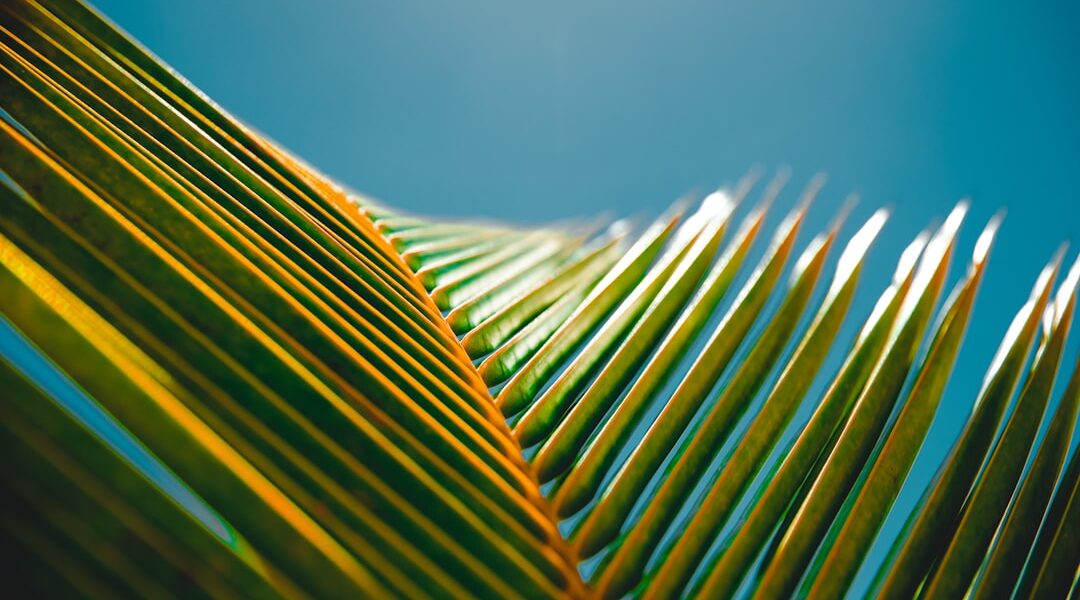
Discover the Beauty of Travelers Palm
The Travelers Palm, scientifically known as Ravenala madagascariensis, is a stunning plant that is native to Madagascar. Despite its name, the Travelers Palm is not a true palm, but rather a member of the bird-of-paradise family, Strelitziaceae. This plant is known for its unique and striking appearance, making it a popular choice for landscaping in tropical and subtropical regions around the world. The Travelers Palm is not only admired for its beauty, but it also holds cultural significance in many regions where it is grown. Its large, fan-shaped leaves and ability to store water make it a valuable resource for both humans and wildlife. In this article, we will explore the history, characteristics, benefits, care, and where to find the Travelers Palm, as well as how to embrace its beauty in your own garden or landscape.
Key Takeaways
- Travelers Palm is a unique and beautiful plant that is popular in tropical and subtropical regions.
- The plant is not a true palm, but actually belongs to the bird-of-paradise family.
- Travelers Palm is native to Madagascar and was first discovered by European explorers in the 18th century.
- The plant is known for its large, fan-shaped leaves and its ability to collect and store rainwater.
- Travelers Palm has various benefits and uses, including providing shade, serving as a natural water source, and being used in traditional medicine.
History and Origin of Travelers Palm
The Travelers Palm has a rich history that dates back to its native land of Madagascar. It was first discovered by European explorers in the 17th century and was named for its unique ability to collect rainwater in its leaf bases, providing a vital resource for weary travelers in the hot and arid regions where it grows. Despite its name, the Travelers Palm is not a true palm and is actually more closely related to the banana plant. It is believed that the name “Travelers Palm” originated from the fact that the large leaves of the plant tend to grow in an east-west direction, providing a crude form of compass for lost travelers. The plant has since been introduced to many tropical and subtropical regions around the world, where it has become a beloved ornamental plant in gardens and landscapes. Its striking appearance and practical uses have made it a symbol of tropical beauty and resilience.
Characteristics and Appearance of Travelers Palm
The Travelers Palm is known for its distinct appearance, with large, banana-like leaves that are arranged in a fan shape on top of long petioles. The leaves can reach up to 10 feet in length and are a vibrant shade of green, adding a tropical touch to any landscape. The plant can grow up to 30 feet tall, with a trunk that resembles that of a palm tree. The flowers of the Travelers Palm are small and white, held within bracts that emerge from the center of the plant. The fruit that follows is a woody capsule containing numerous seeds. One of the most fascinating features of the Travelers Palm is its ability to collect rainwater in its leaf bases, which can be a lifesaving resource for both humans and wildlife in arid regions. This unique adaptation has earned the plant its common name and adds to its allure as a symbol of resilience and resourcefulness in the face of harsh conditions.
Benefits and Uses of Travelers Palm
| Benefits and Uses of Travelers Palm |
|---|
| 1. Provides shade and privacy |
| 2. Resistant to strong winds and hurricanes |
| 3. Can be used as a natural fence |
| 4. Collects rainwater for drinking |
| 5. Used in traditional medicine for treating various ailments |
| 6. Attracts wildlife such as birds and insects |
The Travelers Palm offers a wide range of benefits and uses, making it a valuable addition to any landscape. In addition to its striking appearance, the plant provides shade and shelter for wildlife, making it an important part of the ecosystem in its native habitat and beyond. The ability of the Travelers Palm to store water in its leaf bases makes it a vital resource for humans and animals in arid regions, where water may be scarce. The leaves of the plant are also used for thatching roofs and making baskets, while the sturdy petioles can be used for building materials. In addition to its practical uses, the Travelers Palm is also valued for its ornamental beauty and is often used in landscaping to create a tropical ambiance. Its large, fan-shaped leaves and tall, elegant silhouette make it a striking focal point in any garden or landscape.
How to Care for Travelers Palm
Caring for a Travelers Palm is relatively low maintenance, making it an ideal choice for tropical and subtropical landscapes. The plant thrives in full sun to partial shade and prefers well-draining soil with regular watering. While the Travelers Palm is drought-tolerant once established, it benefits from regular watering during dry periods to encourage healthy growth. Fertilizing the plant with a balanced fertilizer in the spring and summer can help promote lush foliage and vigorous growth. Pruning dead or damaged leaves can help maintain the plant’s appearance and prevent disease. In colder climates, the Travelers Palm can be grown in containers and brought indoors during the winter months to protect it from frost. With proper care and maintenance, the Travelers Palm can thrive and provide years of beauty and practical benefits in your landscape.
Where to Find Travelers Palm

The Travelers Palm can be found in tropical and subtropical regions around the world, where it is prized for its ornamental beauty and practical uses. In its native habitat of Madagascar, the plant can be found growing in forests, along riverbanks, and in other moist, tropical areas. It has also been introduced to many other regions with similar climates, including parts of Africa, Asia, Australia, and the Americas. In these regions, the Travelers Palm is often grown in botanical gardens, parks, and private landscapes, where it adds a touch of tropical elegance and provides valuable resources for both humans and wildlife. Whether you are traveling to a tropical destination or simply looking to add a touch of exotic beauty to your own garden, the Travelers Palm is sure to captivate with its striking appearance and practical benefits.
Embracing the Beauty of Travelers Palm
In conclusion, the Travelers Palm is a remarkable plant with a rich history, striking appearance, and valuable benefits. Its large, fan-shaped leaves and ability to store water make it a symbol of resilience and resourcefulness in the face of harsh conditions. Whether you are drawn to its ornamental beauty or practical uses, the Travelers Palm is a valuable addition to any tropical or subtropical landscape. By understanding its history, characteristics, benefits, care requirements, and where to find it, you can embrace the beauty of the Travelers Palm and appreciate all that it has to offer. Whether you encounter this majestic plant in its native habitat or cultivate it in your own garden, the Travelers Palm is sure to leave a lasting impression with its tropical elegance and practical significance.
If you’re planning a trip to a tropical destination, you might want to consider visiting a place where you can see the stunning travelers palm. This unique plant is a popular attraction for nature lovers and can be found in various locations around the world. For more information on where to find travelers palm and other tropical destinations, check out this article on ourcitytickets.com.
FAQs
What is a travelers palm?
The travelers palm, also known as Ravenala madagascariensis, is a species of plant native to Madagascar. Despite its name, it is not a true palm but is actually a member of the bird-of-paradise family.
What does a travelers palm look like?
The travelers palm has large, banana-like leaves that are arranged in a fan shape, giving it a distinctive and attractive appearance. It can grow up to 30 feet tall and its leaves can reach up to 15 feet in length.
How do travelers palms get their name?
The name “travelers palm” comes from the fact that the large, fan-shaped leaves collect rainwater, which can be used by travelers for drinking in emergency situations. However, it is important to note that the water collected in the leaves should be purified before consumption.
How do you care for a travelers palm?
Travelers palms thrive in tropical climates and require well-drained soil and plenty of sunlight. They are relatively low-maintenance plants and can tolerate some drought, but they do benefit from regular watering and occasional fertilization.
Can travelers palms be grown indoors?
While travelers palms are typically grown outdoors in tropical regions, they can be grown indoors in large containers in areas with colder climates. However, they will require a lot of space and bright, indirect sunlight to thrive indoors.



